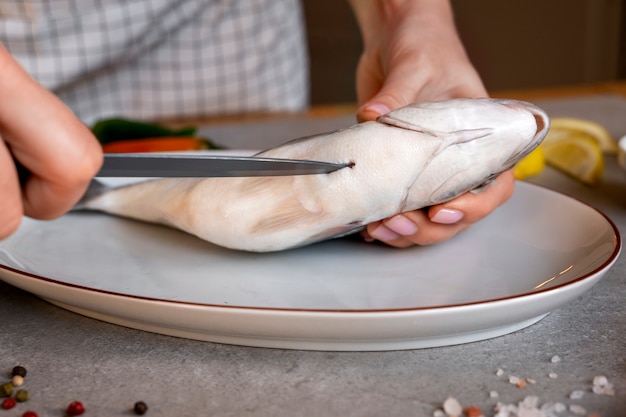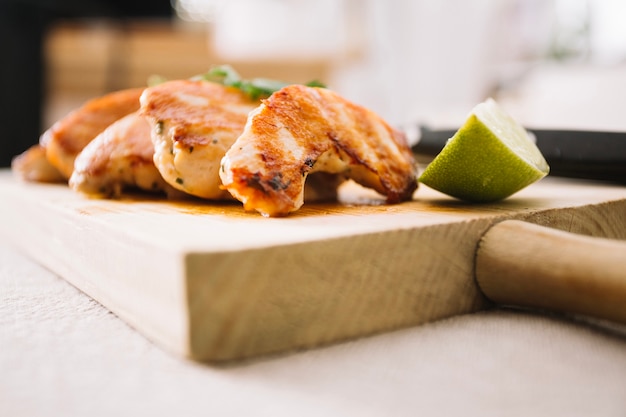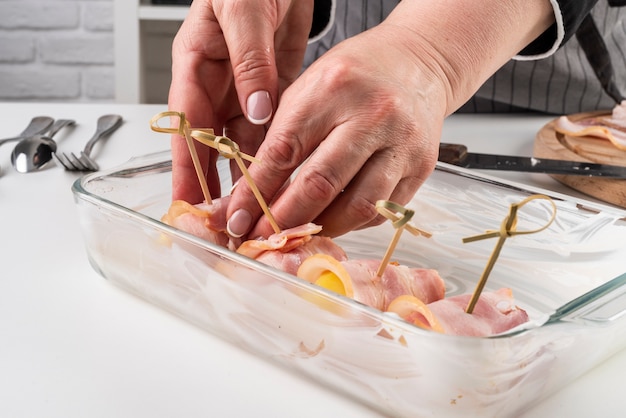Let's face it, there's something undeniably captivating about a plate brimming with succulent crab legs. The tantalising aroma alone is enough to make your mouth water, but it's the pure joy of cracking open those shells, revealing the sweet, tender meat within, that truly elevates the experience. It's a culinary adventure that engages all your senses, and I'm here to guide you through it.
Over the years, I've delved deep into the world of crab leg cookery, experimenting with countless recipes and methods. I've learned the secrets to achieving that perfect balance of flavour and texture, and I'm excited to share them with you. This guide is a blend of my personal experiences, tips, and tricks, designed to help you create the most mouthwatering oven-baked crab legs you've ever tasted. So, grab your aprons, gather your ingredients, and let's embark on this delicious journey together.
(Part 1) The Essential Ingredients

choosing the right crab Legs: The Foundation of Flavor
The key to extraordinary crab legs lies in selecting the right ingredients, and that starts with the crab legs themselves. For the most succulent and flavourful experience, I always choose fresh, live crab legs. The vibrant, natural flavours of live crab are simply unmatched, and they're readily available at your local fishmonger or well-stocked supermarket.
Here's how to ensure you're getting the freshest, most delicious crab legs:
- Firmness: Give the crab legs a gentle squeeze. They should feel firm and heavy, indicating they're packed with meat.
- Colour: Look for a vibrant, reddish-brown shell. A dull or discoloured shell suggests the crab legs may not be as fresh.
- Activity: A live crab leg will be actively moving. If it's still, it's likely not fresh.
If you can't find live crab legs, frozen ones are a perfectly acceptable alternative. Just ensure they're high quality, with a bright, shiny appearance and minimal ice crystals. Avoid those that look dull or have excessive ice buildup.
Seasonings and Sauces: Elevating the Experience
Seasonings and sauces play a vital role in transforming your crab legs from good to extraordinary. They add complexity, depth, and a touch of personal flair to your culinary creation. Here are my personal favorites:
- Garlic Butter: A classic pairing that never disappoints. The rich, buttery aroma and the pungent bite of garlic blend beautifully with the delicate sweetness of crab. Simply melt butter and add minced garlic, a pinch of salt, and a squeeze of lemon juice for a flavour explosion.
- old bay seasoning: This iconic blend of paprika, celery salt, black pepper, and other herbs and spices is a perfect companion for crab legs. It adds a delightful warmth and a hint of spice that complements the natural sweetness of the meat.
- Lemon and Dill: The vibrant freshness of lemon and dill is a match made in culinary heaven with crab. Combine chopped fresh dill with lemon juice and a drizzle of olive oil for a tangy, aromatic sauce that elevates the crab's natural sweetness.
- Spicy Chili Sauce: For those who appreciate a fiery kick, a spicy chili sauce adds a welcome dimension of heat and complexity. Experiment with different chili sauces, such as sriracha or hot sauce, to discover your perfect level of heat.
Don't be afraid to experiment! The beauty of cooking is that you can customize your flavours to suit your taste. Try mixing and matching different seasonings and sauces to create your own signature crab leg experience.
The Importance of Timing: Masterful Cooking
Timing is critical in achieving perfectly cooked crab legs. Overcooking can lead to tough, dry meat, while undercooking can leave them raw and unpleasant.
A good rule of thumb is to bake crab legs for 10-12 minutes per pound. This ensures that the meat is cooked through but remains juicy and tender.
Here's a helpful tip: If you're unsure about the cooking time, it's always better to err on the side of caution and undercook slightly. You can always bake them for a few more minutes if needed, but it's much harder to salvage overcooked crab legs.
(Part 2) Preparing the Crab Legs: Setting the Stage for Flavor

Cleaning and Prepping: A Foundation for Success
Before diving into the baking process, it's essential to give your crab legs a thorough cleaning. This involves removing any dirt or debris that may be clinging to the shells.
Here's how to do it:
- Rinse the crab legs under cold running water.
- Use a stiff brush to gently scrub the shells, removing any clinging particles.
- If you're using live crab legs, it's essential to humanely kill them before cleaning. Place them in the freezer for about 30 minutes. This will stun them and make them easier to handle.
Once the crab legs are cleaned, you can start prepping them for baking. This may involve:
- Cutting them into smaller pieces (if desired), especially for larger legs, for more even cooking.
- Separating the claws from the legs, as they often require different baking times.
Choosing the Right Baking Dish: Optimizing Heat Distribution
The baking dish you choose can impact the outcome of your crab legs. I prefer using a large, shallow baking dish for a few reasons.
- It allows for even heat circulation, ensuring all the crab legs cook uniformly.
- It provides ample space for the legs to lie flat, preventing them from crowding and steaming rather than baking.
A baking sheet is also a viable option, but make sure the crab legs have enough space to cook evenly.
For a more elegant presentation, consider using individual ramekins or small casseroles. This is particularly ideal for serving at a dinner party or gathering, creating a visually appealing and personalized experience for each guest.
Creating a Delicious Bed for Your Crab Legs: Enhancing Flavor
To infuse your crab legs with even more flavour and moisture, consider creating a bed of aromatics and vegetables in your baking dish. This simple addition not only enhances the taste but also prevents the legs from sticking to the bottom of the dish.
Here are a few ideas:
- Lemon Slices: Place lemon slices at the bottom of the baking dish. The citrusy aroma and tang will infuse the crab legs as they cook.
- Chopped Onions and Garlic: Sauté chopped onions and garlic in butter before adding the crab legs. The caramelized onions and garlic will impart a wonderful depth of flavour to the crab.
- Fresh Herbs: Add a sprig of rosemary, thyme, or parsley to your baking dish for a fragrant boost.
Experiment with different combinations of aromatics and vegetables to create your own unique flavour profiles.
(Part 3) The Baking Process: Bringing Your Crab Legs to Life

Getting Started: Setting the Stage
Once your crab legs are prepped and arranged in the baking dish, you're ready to start baking. Preheat your oven to 400°F (200°C).
Before placing the dish in the oven, ensure your crab legs are coated with your chosen seasoning or sauce. Here's a simple guide:
- Garlic Butter: Generously brush the crab legs with melted garlic butter.
- Old Bay Seasoning: Sprinkle Old Bay seasoning liberally over the crab legs.
- Lemon and Dill: Drizzle the crab legs with a mixture of lemon juice and chopped fresh dill.
- Spicy Chili Sauce: Brush the crab legs with your favorite spicy chili sauce.
Baking Time: The Perfect Balance
The baking time for crab legs varies depending on their size and thickness. As a general guideline, bake them for 10-12 minutes per pound. For larger legs, you may need to increase the baking time slightly.
Here's how to check for doneness:
- Insert a fork into the thickest part of a leg. If the meat is white and opaque, it's cooked through.
- Use a meat thermometer. Insert a meat thermometer into the thickest part of a leg. The internal temperature should reach 145°F (63°C) for safe consumption.
During baking, it's a good idea to baste the crab legs every few minutes with the melted butter or sauce. This helps to keep them moist and flavorful, creating a beautiful, glossy finish.
Tips for Perfectly Baked Crab Legs: Ensuring Success
- Don't overcook: Overcooked crab legs can become dry and tough. Check them regularly to avoid this.
- Don't crowd the baking dish: Ensure enough space for air circulation and even cooking.
- Use a meat thermometer: For a foolproof approach, insert a meat thermometer into the thickest part of a leg. The internal temperature should reach 145°F (63°C) for safe consumption.
(Part 4) Serving and Enjoying: A Feast for the Senses
Presentation is Key: A Culinary Masterpiece
When it comes to crab legs, presentation is just as important as flavour. After all, it's a feast for the eyes as well as the palate!
Here's how to create a visually appealing and inviting spread:
- Arrange your baked crab legs on a large platter or serving dish. This creates a beautiful, spacious display that's perfect for sharing.
- Place bowls of melted butter, lemon wedges, and dipping sauces on the side. This allows guests to personalize their crab leg experience.
For a more casual setting, you can serve the crab legs in individual bowls, with a side of your favourite dipping sauces. This makes it easy for guests to grab and go.
Dipping Sauces: Complementary Flavors
No crab leg feast is complete without a selection of dipping sauces. These sauces enhance the flavour profile and allow each guest to personalize their own crab leg enjoyment.
Here are a few suggestions:
- Melted Butter: A classic dipping sauce that never goes out of style. Enhance it with minced garlic, lemon juice, or chopped fresh herbs for extra flavour.
- Cocktail Sauce: A tangy and spicy sauce made with ketchup, horseradish, and lemon juice.
- Remoulade Sauce: A creamy, mustard-based sauce with a hint of spice.
- Spicy Chili Sauce: For those who like a kick, a spicy chili sauce will add heat and flavour.
Experiment with different dipping sauces to find your perfect combination. Don't be afraid to get creative and try new flavour combinations.
Cracking and Enjoying: A Culinary Adventure
The moment of truth has arrived – cracking open those crab legs and savouring the juicy, sweet meat.
Here's a simple guide to cracking crab legs:
- Start with the claws: Use a crab cracker to crack open the claws.
- Remove the meat: Use a fork or crab pick to remove the meat from the claws.
- Crack the legs: Use the crab cracker to crack the legs into smaller pieces.
- Extract the meat: Use a fork or crab pick to extract the meat from the legs.
Remember to dip your crab meat in your chosen sauces for a delicious and satisfying experience. It's not unusual for guests to get messy, but that's all part of the fun!
(Part 5) Variations and Alternatives: Beyond the Classic
Spice It Up: Adding a Touch of Heat
If you prefer your crab legs with a bit more heat, try adding some chili flakes, hot sauce, or cayenne pepper to your seasoning or dipping sauces. You can also use a spicy butter or garlic butter for a flavourful kick.
Go Asian: Exploring Global Flavors
For a unique twist, consider using an Asian-inspired marinade or dipping sauce. A mixture of soy sauce, ginger, garlic, and sesame oil would make a fantastic marinade. You could also serve a sweet and spicy chili sauce or a soy-ginger dipping sauce.
Add Some Veggies: A Complete Meal
To create a more complete meal, you can add vegetables to your baking dish. Asparagus, broccoli, carrots, or mushrooms would all go well with crab legs. The vegetables will absorb some of the flavours from the crab and the seasonings, creating a delicious, well-balanced dish.
Consider Other Seafood: Expanding Your Horizons
If crab legs aren't your thing, you can use similar baking techniques for other seafood like lobster, shrimp, or scallops. These seafood options will require slightly adjusted baking times, but the overall process is essentially the same.
(Part 6) Leftovers and Storage: Making the Most of Your Culinary Creation
If you happen to have leftovers (which is a rarity in my household!), store them in an airtight container in the refrigerator for up to 3 days. You can reheat them in the oven, microwave, or on the stovetop.
For longer storage, you can freeze cooked crab legs for up to 3 months. Just ensure they're properly sealed and labelled. When thawing, transfer them from the freezer to the refrigerator for 24 hours. You can then reheat them as described above.
(Part 7) FAQs: Addressing Common Questions
Q1: What is the best way to cook crab legs?
While grilling, steaming, or boiling are popular methods, oven-baking is my personal favourite. It's a foolproof way to achieve perfectly cooked crab legs with a delicious flavour. Plus, it's easy to control the cooking time and ensure even heat distribution.
Q2: How do you know if crab legs are cooked?
The easiest way to check is to insert a fork into the thickest part of a leg. If the meat is white and opaque, it's cooked through. You can also use a meat thermometer, ensuring the internal temperature reaches 145°F (63°C).
Q3: What can I do with leftover crab meat?
Leftover crab meat is a culinary treasure! You can use it in salads, sandwiches, pasta dishes, or even soups. Get creative and explore the endless possibilities.
Q4: How do you clean crab legs?
Rinse the crab legs thoroughly under cold running water. Use a brush to scrub away any dirt or debris. If using live crab legs, humanely kill them by placing them in the freezer for 30 minutes before cleaning.
Q5: Can I bake crab legs with the shells on?
Absolutely! Baking crab legs with the shells on is the traditional way to cook them. This allows the flavours to develop and the meat to stay moist. However, if you prefer to bake them without the shells, you can remove the shells before baking, but be sure to keep the meat intact.
(Part 8) Final Thoughts: Embrace the Culinary Adventure
Oven-baked crab legs are a culinary delight that engages all your senses. With the right ingredients, techniques, and a dash of creativity, you can create a truly memorable dining experience. Whether you're hosting a dinner party or enjoying a casual meal at home, remember to embrace the joy of cracking those shells and savouring the sweet, tender meat inside. Happy baking!
Everyone is watching

Prime Rib Roast Cooking Time Chart: Per Pound Guide
Cooking TipsPrime rib roast. Just the name conjures images of lavish dinners, crackling fires, and hearty laughter. It’s ...

How Long to Bake Potatoes in the Oven (Perfect Every Time)
Cooking TipsBaked potatoes are a staple in my kitchen. They're incredibly versatile, delicious, and surprisingly easy to m...

Perfect Rice Every Time: The Ultimate Guide to Cooking Rice
Cooking TipsAs a self-proclaimed foodie, I've always been a bit obsessed with rice. It's the foundation of countless cuisi...

The Ultimate Guide to Cooking Asparagus: Tips, Techniques, and Recipes
Cooking TipsAsparagus. The mere mention of this spring delicacy conjures up images of vibrant green spears, crisp and burs...

Ultimate Guide to Cooking the Perfect Thanksgiving Turkey
Cooking TipsThanksgiving. Just the word conjures up images of overflowing tables laden with delicious food, the scent of r...
